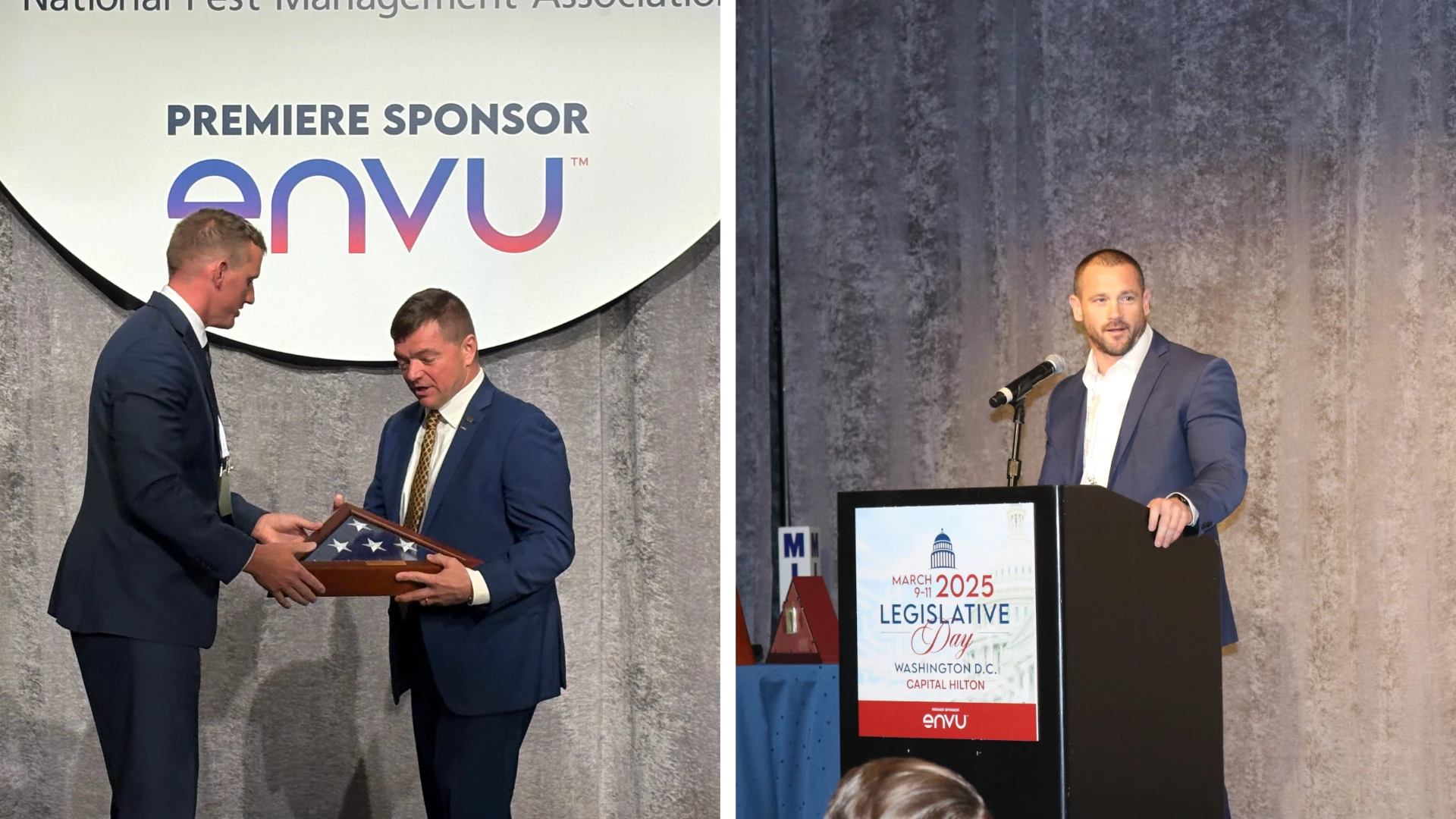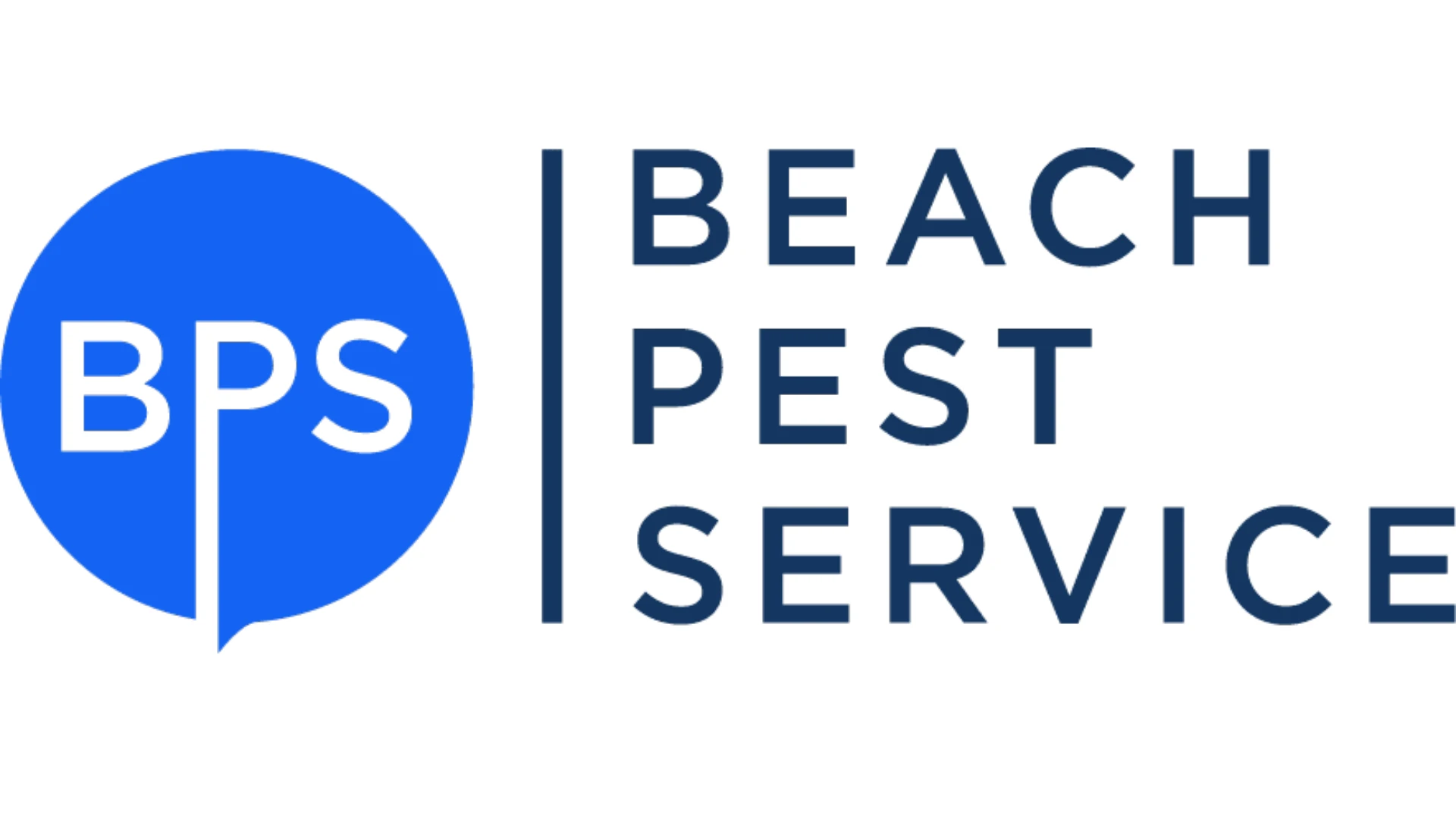DUST MITES TARGETED WITH NEW TREATMENT DEVICE
COLUMBUS, Ohio -- For many years, Dr. TedPayton, M.D., wondered if there was a way to better treat thesufferers of allergies and asthma that passed through hisColumbus, Ohio-area practice. If only there were ways ofpreventing the causes of the allergies and asthma, insteadof continually treating the symptoms with expensive anddiscomforting allergy shots.
But now after nearly 12 years ofdevelopment, Payton may have found a way to combat dust mites, amajor allergy perpetrator, right where they live. And it couldrepresent a significant new market for PCOs.
Where pets and pet dander are atrigger of allergic reactions, the solution seems relativelysimple: restrict the patient’s contact with pets. But whenthe cause of the allergy is a pest that exists in great numbersin virtually every home, and one which thrives on flakes of deadskin shed daily from humans and pets as well as on mold spores— a food source readily available in every home — theproblem becomes a bit more challenging.
For several years scientists haverecognized the threat that the house dust mite presents tomillions of allergy, asthma and hay fever sufferers worldwide.The pest is found on carpets, rugs, couches, bedding and stuffedchairs, and is so small that 10 mites could fit on the head of apin. Furthermore, it is estimated that 55% of house dust is madeup of dust mites and their debris.
People who are allergic to dustmites may experience a reaction after inhaling the microscopicparticles of broken and dried dust mite fecal pellets and otherdust mite debris. Typically, the lining of the nose and tubes ofthe lungs becomes irritated, and hay fever-like symptoms result(sneezing, stuffy nose, headaches, itchy eyes and nose, etc.).These symptoms can also progress into signs of asthma: chroniccough, shortness of breath, and wheezing.
"We now know there is a lotof asthma related to dust mites," said Dr. Don McNeil, anOhio State University immunologist and assistant professor ofinternal medicine. But, McNeil said, there hasn’t been aconcentrated effort to control dust mites, and many such effortsrequire regular retreatment. And despite the scientificcorrelation between dust mites and allergies and/or asthma, fewproducts or devices have been developed to effectively controlthem or their debris.
That, however, may be changing.Payton, with the help of Ohio State University scientists, hasdeveloped a machine designed to control dust mite infestations.The device works by rolling over household carpeting, much like alawnmower rolls over grass, and injecting minuscule amounts of apermethrin-based insecticide deep into the base of carpeting,where house dust mites reside.
The insecticide, called Smite, wasdeveloped for use in the machine and is formulated to kill dustmites. According to Payton, the product does not present a healththreat to humans because of its small use concentration andlocation deep into the carpet. Applying the permethrin into thewebbing of the carpet also prevents it from being broken down byvacuuming, carpet cleaning and foot traffic, McNeil said.
After the dust mites areeliminated by the permethrin treatment, and the accumulation ofbody parts, eggs and feces removed by filtered vacuuming, theparticles which induce the allergic symptoms are expected to besignificantly reduced. While carpets are not the only areas housedust mites can be found, it is by far their major living area.
The technique of injecting carpetfibers with permethrin has proven to be effective on carpet-basedpests, including dust mites in the lab throughout nearly fouryears of study, Payton said. And in July, a group of doctors andscientists began work on an Ohio-State funded study to determineif laboratory results can be reproduced in the field, translatingto an actual reduction of asthma in the home environment.
"We can eliminate the housedust mite perfectly in the lab," Payton said. "OSUwants to see if the control of dust mites in the home will reduceasthma." Fifty patients were to participate, and twoprototypes of the machine have already been developed.
The machine has been registered bythe Environmental Protection Agency with labeling that restrictsapplication of the product to PCOs only. According to EmmitGlass, an entomologist involved in the project, it wasintentionally labeled in a manner that would prevent distributionto and application by the general public. Glass believes themachine could create two new business opportunities for PCOs:chemical treatment of carpets and textiles prior to entry intohome or commercial settings, and after-market care of carpets forlong-term control of dust mites.
This use of this machine couldgive the pest control industry a chance to help reduce what aremajor, international health problems — asthma and allergies.And Dr. Payton hopes that this opportunity will pique theinterest of PCOs and eventually help reduce the symptoms asthmasufferers endure. Payton estimated that the machine could becommercially available within three months, and is hopeful theresults of the OSU study, which will be completed in a year, willprove the machine is effective.
Harry Katz, a board-certifiedentomologist and PCT columnist, said the machine could alsopossibly be developed for use in controlling fleas and carpetbeetles. Katz said while using the machine for controlling dustmites alone represents a huge market, it pales in significancewith its potential as a flea control device. Many tests have alsoshown permethrin to be an effective long-term moth-proofer, aboon for people who have woolen rugs, Katz said. — SteveSmith
New Florida Association Launched
TAMARAC, Fla. -- In a state that is home to one ofthe oldest and largest state associations, the Florida PestControl Association, there is also room, it appears, for a secondorganization of pest control professionals.
The Certified Pest ControlOperators of Florida may not be the state’s oldest, mostestablished association of pest control operators, but it is oneof the fastest growing, most influential state associations inthe industry.
"Nobody in this associationever thought we would be as far advanced in our membership as weare in our third year," said CPCO executive vice president,Mel Edelstein. The association has, in fact, grown rapidly:Established in 1994 by a group of 12 PCOs, the not-for-profitorganization now has more than 930 members. A large factor in theassociation’s popularity is likely its clear-cut mission:Formed out of a need to serve the needs and concerns of smallerpest control companies, CPCO is built upon a commitment tolegislation, education and fellowship.
The association prides itself on apolicy of aggressive grass-roots lobbying efforts and cooperationwith regulatory officials. Members work with officials at theDepartment of Agriculture and Consumer Services on a daily basisto stay abreast of changes and keep in touch with regulators. Andlobbying efforts are planned several times throughout the year tomaintain strong relationships with elected officials, who in manycases are also customers of CPCO member companies.
Edelstein, who owns AIM PestControl, Fort Lauderdale, works full-time for the association. Asits sole staff member, he handles administrative and supportfunctions, maintains regular contact with legislators andregulators, and mans the association’s small headquartersoffice, located in Tamarac.
"What makes us different isthat we understand the problems of the pest controlindustry," said Edelstein. "I am a certified pestcontrol operator. I am the person in the office, can answerquestions and have an open line to the state." Edelsteinalso points out, contrary to popular belief, most of theassociation’s members are business owners: More than 95% ofCPCO’s members own pest control operations. The membershipis made up mainly of one- or two-person businesses. In servingthese companies’ needs, the association appears to be pavingnew grounds and perhaps is solving what has long been a problemamong the diverse members of the industry.
Another reason for theassociation’s appeal to many Florida PCOs is its cost:Annual dues are just $75. "We get people’s attention byour price, there’s no doubt about it," said Edelstein."Once we gain their attention, it’s our job to keepthem." In addition to numerous training programs throughoutthe year (equivalent to 250 CEUs in 1997), CPCO also offersmembers other benefits, all included in the annual fee:discounted membership in Chemtrec and discounts on legalassistance, prospective employee background checks, and cellularphone service, among other benefits. Members also receive asubscription to The CPCO Advantage, the association’smonthly magazine for members. The 50-page magazine is also sentto an additional 1,100 prospective members around the state eachmonth.
Current CPCO president, JosephMiller, of JP Miller & Sons Services, Deerfield Beach, plansto see the membership top 1,000 in the next year."We’re looking to be the biggest organization in thecountry," he said. "If we don’t achieve it thisyear, we’ll get it in the forseeable future."
Certainly Edelstein understandsthe challenge of being the second organization in the state,especially concerning legislative issues and lobbying efforts,but in this area he has worked to coordinate efforts. This March,CPCO endorsed a FPCA-sponsored bill concerning termitepretreatments.
"We worked together callingour legislators and watching the bill move," Edelstein said.Although the bill did not pass, Edelstein is hopeful thecooperative effort is repeated in future endeavors. "We feelit’s so important that we have one voice in Florida, that wespeak in one voice."
Also this past March, close to1,000 attended CPCO’s third annual convention, held inDavie, Fla. One highlight of the program was a symposiummoderated by industry consultant Lloyd Smigel, in which attendeesdetermined there are two major issues to be dealt with:enforcement of illegal operators, and over-the-counter chemicalsales. A second symposium, planned for September, will focus onsolutions to these problems, Edelstein said.
Although Edelstein is both pleasedand surprised with the amount of growth the association hasexperienced, he expects to see even more expansion in the comingmonths. With an estimated 6,000 certified pest control operatorsnow working in Florida, Edelstein said, less than one-third arecurrently members of either CPCO or the FPCA. And CPCO alsoexpects to continue branching out to include more PCOs in a widergeographic area. Originally, most members were located insouthern Florida, but today there are CPCO members throughout thestate. Currently, monthly meetings are held in Miami, FortLauderdale, St. Lucie, and Orlando. And this fall, Jacksonvilleand Tampa will be added to the list. Technician training seminarsare to be held in all six locations, four times a year.
"Our goal is to bestatewide," Edelstein said, "and represent the industrythroughout the state." Still, he pointed out, CPCO memberswon’t be the only ones to benefit from its efforts."This was something that was born out of our needs, and nowthat it’s here it’s really giving back to the industryten-fold," Edelstein said. "It’s not only forCPCO. We will go out and protect the industry anywhere we have togo." — Lisa Josof
RECRUIT AG RECEIVES FEDERAL REGISTRATION
INDIANAPOLIS —
These above-ground stations areaffixed directly to areas where termites are foraging toimmediately impact the attacking colony, as well as to provideassistance at sites where there is limited opportunity forin-ground baiting.
Recruit AG contains the activeingredient hexaflumuron, which is an insect growth regulator thatkills termites by preventing them from molting. Termites eattheir way through the bait and take the hexaflumuron back to thecolony. The result, according to DowElanco, is total termitecolony elimination.
The above-ground stations are acomplement to the current offering of the Sentricon System.Sentricon uses monitoring devices around the perimeter of thestructure and in areas conducive to termite activity. Oncetermites are discovered, they are transferred into a"Baitube" device containing hexa-flumuron. Once thecolony is eliminated, the monitoring devices are placed back intothe in-ground stations to monitor for new colonies attacking thestructure.
"Recruit AG is primarily usedto deliver greater amounts of hexaflumuron to the termitecolony," said Kevin Burns, product marketing manager forSentricon. "Used in conjunction with the Sentricon System,it is an ideal weapon to gain immediate control, and ultimatelyeliminate entire termite colonies."
Recruit AG is available in ahard-style station that can be affixed to areas such as walls,concrete supports and floor joists inside or outside a structure.The stations are used only after termites have been discovered,and are most effective when applied to an active termite mudtube.
Sentricon was the first pestcontrol product approved under the EPA’s reduced riskpesticide initiative, and has been available to authorized pestcontrol operators since 1995.
NEW OWNERS, STRATEGY FOR WILSON PEST CONTROL
WINSTON-SALEM, N.C. -- Wilson Pest Controlhas announced the company is now owned and operated by W. HughWilson IV and R. Scott McNeely, along with Earl Geiger, PamJordan, Glenn Delk and the Angelo Financial Group.
With Wilson and four other pendingtransactions, the new investor group is committed to becoming aleading national provider of residential and commercial pestcontrol services. The company will be built through acquisitionsas well as continued internal growth and profitability. Theinvestment group also claims to preserve the entrepreneurialspirit of newly acquired companies. Centralization will only beutilized when it can enhance competitiveness and buying power,and does not interfere with the employee or the customer,according to a Wilson statement.
Joining Messrs. Wilson and McNeelyin the management of the new venture is former Orkin presidentEarl Geiger, who will serve as senior adviser; Pamela Jordan ofEVP Acquisitions and Corporate Development, and former owner ofArab Pest Control; and Glenn Delk, who has more than 10 years ofexperience in the pest control industry in the areas of legalrepresentation, financial negotiation and acquisitions.
Along with the executivecommittee, an official forum will be developed for acquiredcompanies to have a strong voice in the operation of theirbusinesses and the decisions that affect the way they operate.According to the company statement, Wilson directors alsoanticipate providing employees with the opportunity toparticipate in various employee stock ownership programs.

Explore the August 1997 Issue
Check out more from this issue and find your next story to read.
Latest from Pest Control Technology
- Understanding Rodents and Bird Flu
- Green Pest Solutions Awards Safest Driver New 2025 Ford F150
- UF/IFAS Sheds Light on Tiny Invaders During Termite Awareness Week
- Registration Open for Lawn & Landscape Technology Conference
- Fleetio Launches Automotive Service Excellence Scholarship
- WorkWave Appoints John Phelan as CTO
- PMPs Use Capitol Hill Visits to Push for Preemption
- 20 Trapping Tips





